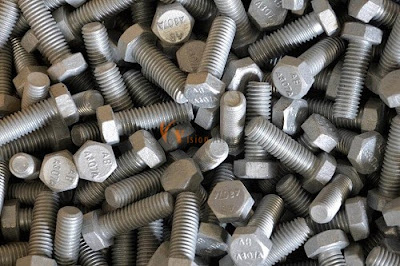Stainless Steel 416 vs 316
The Great Debate: Stainless Steel 416 or 316 - Making the Right Decision
Introduction
When selecting the ideal stainless steel for your project, you may cross the line between two popular choices: Stainless Steel 416 and Stainless Steel 316. Both materials have unique properties and applications, making the decision-making process daunting. In this article, we will delve into the distinctive characteristics of Stainless Steel 416 and Stainless Steel 316, allowing you to make an informed choice for your specific needs.
1. What is Stainless Steel?
Stainless steel is a versatile, corrosion-resistant alloy of iron, carbon, and other elements. Its remarkable properties make it popular in numerous industries, including construction, aerospace, automotive, and medical equipment manufacturing.
2. Understanding Stainless Steel 416
Composition and Properties
Stainless Steel 416 is a free-machining martensitic stainless steel that contains sulfur, enhancing its machinability. It is characterized by its moderate corrosion resistance and high strength.
Common Applications
Due to its machinability, Stainless Steel 416 is often used in applications requiring intricate components or detailed shapes, such as bolts, nuts, and screws.
Advantages and Disadvantages
Its key advantages are stainless Steel 416's excellent machinability and moderate corrosion resistance. However, its limited corrosion resistance compared to other stainless steel grades might restrict its use in specific environments.
3. Exploring Stainless Steel 316
Composition and Properties
Stainless Steel 316 is an austenitic stainless steel alloy containing molybdenum, which enhances its corrosion resistance, particularly against chloride environments.
Common Applications
Stainless Steel 316 finds extensive use in marine equipment, chemical processing plants, and medical implants thanks to its superior corrosion resistance properties.
Advantages and Disadvantages
Stainless Steel 316's outstanding corrosion resistance, and excellent mechanical properties make it an ideal choice for applications where exposure to harsh environments is expected. However, its higher cost than other stainless steel grades might influence budget-sensitive projects.
4. Comparing Stainless Steel 416 and 316
Corrosion Resistance
Stainless Steel 316 surpasses Stainless Steel 416 in terms of corrosion resistance, especially in environments with chlorides or acidic conditions.
Mechanical Properties
Stainless Steel 416 exhibits higher machinability and strength than Stainless Steel 316, which has better ductility and toughness.
Cost Considerations
Stainless Steel 416 is generally more cost-effective than Stainless Steel 316, making it an attractive option for specific applications with less demanding environmental conditions.
Suitability for Different Environments
Stainless Steel 316 is preferred for marine and chemical processing applications due to its exceptional corrosion resistance. At the same time, Stainless Steel 416 may be more suitable for projects with less aggressive environmental exposure.
5. Selecting the Right Stainless Steel for Your Project
Determining Environmental Factors
Consider the specific conditions your stainless steel will be exposed to, including temperature, humidity, and chemical presence.
Load and Stress Requirements
Evaluate the mechanical properties needed for your project, such as strength, flexibility, and toughness.
Longevity and Maintenance
Assess the expected lifespan of your project and the level of maintenance required to ensure the stainless steel's longevity.
6. Case Studies: Real-Life Applications
Construction Industry
Discover how different stainless steel grades have been utilized in the construction industry, showcasing their advantages and limitations.
Marine Applications
Explore the successful integration of Stainless Steel 316 in marine environments, emphasizing its corrosion-resistant qualities.
Manufacturing Sector
Learn how Stainless Steel 416 has contributed to the manufacturing sector's efficiency and cost-effectiveness.
7. Expert Opinions: Industry Perspectives
Engineers' Recommendations
Insights from experienced engineers on the best stainless steel selection practices based on project requirements.
Material Suppliers' Insights
Learn from stainless steel suppliers about the latest innovations and their recommendations for specific applications.
Customer Feedback
Gather valuable feedback from end-users using Stainless Steel 416 and Stainless Steel 316 in their projects.
8. Making an Informed Decision
Identifying Your Priorities
Determine the key factors influencing your decision, such as cost, corrosion resistance, and mechanical properties.
Weighing the Pros and Cons
Carefully evaluate the advantages and disadvantages of Stainless Steel 416 and Stainless Steel 316 for your project.
Consulting with Professionals
Seek guidance from industry experts or engineers to make the right choice for your specific application.
9. Conclusion
In conclusion, the decision between Stainless Steel 416 and Stainless Steel 316 depends on your project's unique requirements. While Stainless Steel 416 excels in machinability and cost-effectiveness, Stainless Steel 316 stands out with its exceptional corrosion resistance. Understanding your project's environmental conditions and mechanical demands is crucial in making the right decision.


.png)
Comments
Post a Comment